
FinOps SaaS Myths Busted: SaaS vs Cloud (and Why It Matters for…
Table of Contents ToggleHow FinOps Teams Commonly Understand SaaS—and What’s MissingSaaS...
Back
Back
Search for Keywords...
Blog
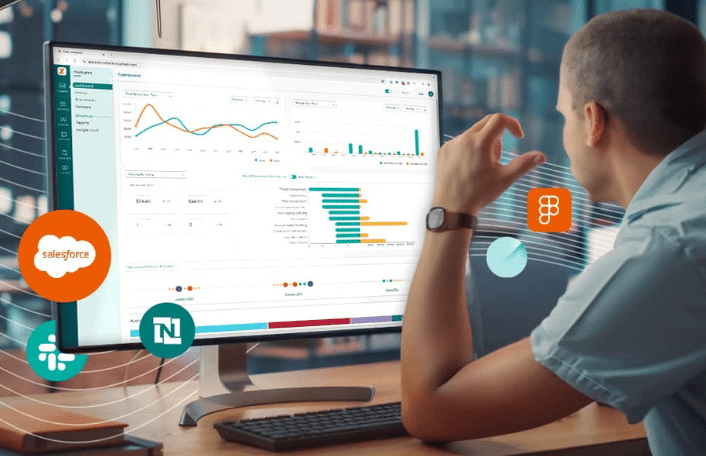
Table of Contents
SaaS applications have revolutionized how businesses operate, enabling agility, scalability, and innovation. However, the exponential growth of SaaS portfolios has also introduced significant challenges. The big problem is that organizations lack visibility and insights into their portfolios. As a result, they’re faced with rising costs, security vulnerabilities, and inefficiencies across teams. A SaaS system of record is the foundation for addressing these issues, offering centralized visibility and actionable insights into your entire SaaS ecosystem.
This article explores what a SaaS system of record is, why it’s crucial for modern organizations, and how to build one to optimize your SaaS portfolio and drive business success.
A SaaS system of record is a centralized repository that tracks all applications in your SaaS portfolio. It captures essential information, including application names, contract details, usage metrics, ownership, and costs, consolidating it into a single source of truth. Unlike spreadsheets or fragmented tools, a SaaS system of record provides real-time, actionable data that enables better decision-making and portfolio optimization.
The Enterprise SaaS Management Framework emphasizes that the system of record is foundational to managing SaaS effectively. It creates visibility into your software stack, allowing businesses to address shadow IT, rationalize applications, improve security posture, and ensure alignment with organizational goals.
The No-BS SaaS Management Playbook
Learn MoreManaging SaaS without a system of record results in missed opportunities, wasted resources, and unmanaged risks. Here are the key reasons why a system of record is essential:
Today, IT departments oversee just 16% of SaaS applications and 26% of software spending. While this decentralized purchasing environment empowers teams to choose the tools they need, it creates blind spots for IT. As a result, it leads to fragmented systems, overspending, unvetted security risks, and inefficiencies. A SaaS system of record restores visibility by centralizing data across all departments, enabling IT to mitigate risks, optimize spending, and ensure compliance.
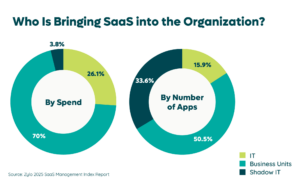
The average organization manages 275 SaaS applications. For many larger enterprises, this number is even higher. Spreadsheets and manual tracking methods simply can’t keep pace with this volume. A SaaS system of record automates discovery and ensures new applications are constantly surfaced. Having a discovery mechanism ensures that every application is accounted for and easily accessible. This scalability is critical for managing growing portfolios effectively.
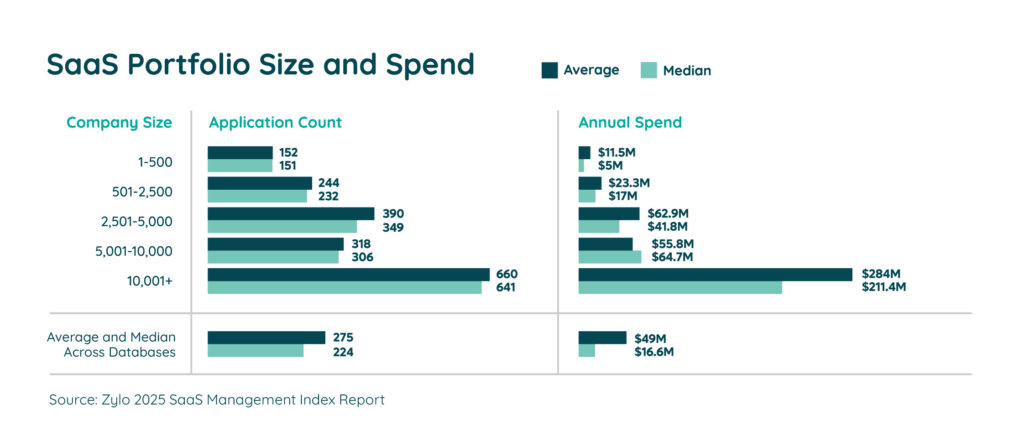
A centralized repository simplifies the analysis and comparison of application data, enabling organizations to identify inefficiencies and take corrective action. For instance, Zylo’s platform uses AI-driven insights to help businesses identify and reclaim unused licenses, optimize spending, and align applications with strategic goals. By using data to make decisions, organizations can ensure their SaaS investments deliver maximum value.
SaaS portfolios touch every department, from IT and Software Asset Management to Procurement and Finance. A system of record facilitates shared visibility, driving alignment across teams. This transparency fosters collaboration, reduces redundancy, and enables all stakeholders to work toward common business objectives. For example, when IT and Procurement collaborate using a shared system, they can streamline renewals and reduce costs more effectively.
A SaaS system of record provides a centralized foundation for managing your SaaS portfolio with greater precision. It goes beyond simple data consolidating, creating a foundation for actionable insights, operational efficiency, and strategic value. The following are key benefits to having a system of record.
Locating information about SaaS applications is often a time-consuming and frustrating task. Without a centralized system, IT, SAM, and Procurement teams must sift through emails, shared drives, or outdated spreadsheets to find application details, contracts, or owner information.
A SaaS system of record eliminates this inefficiency by centralizing all relevant data into a single, easily accessible platform. Teams can quickly locate contract terms, usage metrics, or ownership details with just a few clicks. This not only saves time but also improves productivity, enabling you to focus on strategic tasks rather than manual searches.
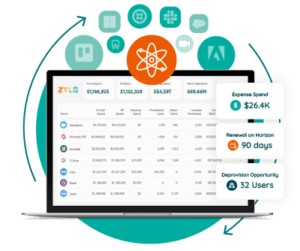 One of the most significant challenges of managing SaaS portfolios is keeping up with constant changes. New applications are added, existing ones are retired, and shadow IT can proliferate unchecked. Without real-time updates, businesses risk managing outdated data, which can lead to making poor business decisions.
One of the most significant challenges of managing SaaS portfolios is keeping up with constant changes. New applications are added, existing ones are retired, and shadow IT can proliferate unchecked. Without real-time updates, businesses risk managing outdated data, which can lead to making poor business decisions.
Using a SaaS system of record ensures organizations always have an accurate and up-to-date view of their application ecosystem. Real-time discovery tools automatically identify new software, flag changes, and provide continuous updates, allowing businesses to maintain visibility and stay proactive. With tools like Zylo’s SaaS Management Platform, you can discover applications as they are purchased, ensuring no tool goes unnoticed.
Ambiguity around application ownership can lead to missed renewals, underutilized licenses, and stalled decisions. Accountability falls through the cracks when no one knows who is responsible for a specific SaaS tool, creating bottlenecks and inefficient workflows.
A SaaS system of record makes it easy to track ownership for every application, linking tools to specific employees or business leaders. This simplifies the management of renewals, license optimization, and app onboarding processes. Clear attribution ensures accountability and helps prevent overlapping purchases or unmonitored applications.
Functional overlap and redundant applications are common, especially when multiple departments independently purchase tools with similar features. These redundancies lead to wasteful and inefficient spending, and data and collaboration silos.
A SaaS Management platform provides the visibility needed to identify and address these overlaps. By consolidating app users, usage, functionality, and spend, businesses can evaluate redundant applications or evaluate which could be consolidated.
For example, a company might discover it is paying for ten project management tools when two or three would suffice. By removing those superfluous redundant apps, the company could significantly save money while also improving collaboration due to more employees on fewer tools.
SaaS applications inherently carry risks, particularly when shadow IT or unmanaged tools enter the ecosystem. IT teams may struggle to identify risky applications or enforce compliance standards without centralized visibility, leaving the organization vulnerable to breaches or data leaks.
A SaaS system of record strengthens security by providing IT with a comprehensive view of all tools in use, including those that have bypassed traditional procurement processes. This visibility enables teams to assess security risks, enforce compliance measures, and ensure applications meet organizational standards. Proactive monitoring of security gaps and rapid response to emerging threats help reduce risk and maintain the integrity of sensitive data.
A SaaS Management Platform (SMP) is the ideal solution for creating a SaaS system of record. Unlike spreadsheets and legacy Software Asset Management (SAM) tools, SMPs are purpose-built for SaaS environments and provide the scalability, automation, and analytics required for effective management.
Building a SaaS system of record is the first step in Phase One of the Enterprise SaaS Management Framework. Here’s how to get started.
Begin by connecting financial systems, expense data, and contracts to uncover all applications in use. Discovery is the critical first step, as shadow IT is often hidden in expense reports—miscategorized and not tagged as software.
Because shadow IT accounts for nearly half of all applications, it’s crucial to have a tool like Zylo’s AI-powered discovery engine. It leverages Zylo’s extensive application library (the Zybrary) of more than 24,000 applications to ensure comprehensive visibility. Then, the machine-learning matching model ensures even miscategorized expense spend is found.
Once you’ve discovered all the applications in your environment, you now have an list of your SaaS inventory. At this point, you’ll want to categorize these applications into tiers (core IT-managed, departmental, and long-tail apps) based on an application’s strategic importance to the business. Doing do helps you prioritize your SaaS Management efforts.
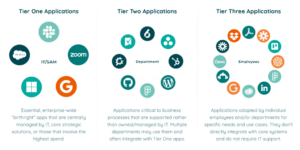
The next step is onboarding applications into your system of record. That means adding contracts, SKUs, and usage data into the system to ensure accurate tracking. Remember the tiers in the last step? Start by onboarding your core IT-managed apps, often categorized as Tier One. After all, you can’t boil the ocean. Onboarding apps with a phased approach will help you build a strong foundation from the start so you can effectively scale your program.
Finally, the data in your system of record remains most valuable if it is up to date. That means you must establish a process to maintain the system regularly. Using the alerts available in your SMP makes this easier.
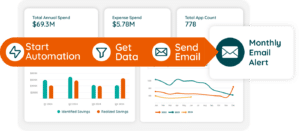
For example, set spending alerts to help you detect any time a new tool is purchased. When you get that alert, you know to begin the onboarding process and add the application to your system of record.
Likewise, set a renewal alert 120 days before the renewal date to kick off the renewal process and remind you to audit the application owner. This step ensures the owner is accurate and that the right person is engaged in the process.
When it comes to SaaS, a system of record is your source of truth for all your applications—including each app’s spend, usage, and contract data. Build it right with accurate, up-to-date information so that decisions are made using data, not opinions
Zylo was designed to serve as your SaaS system of record, powered by automated discovery, real-time inventory updates, and advanced analytics. With Inventory Management, gain unparalleled visibility, drive cost savings, and improve governance and risk across your portfolio.
“Before Zylo, I managed SaaS in terms of determining what those tools are, who’s using them, how much they cost, and what they’re used for. I spent very little time making strategic decisions. Now, with Zylo, I’m acting on the data, solving the problems instead of finding them.”
— Gibson Schnurr, TechOps Lead at Juni
Ready to take control of your SaaS environment? Explore an interactive tour or schedule a personalized demo to see how Zylo can help you get started with SaaS Management or improve your existing program.

Table of Contents ToggleHow FinOps Teams Commonly Understand SaaS—and What’s MissingSaaS...

Table of Contents ToggleWhat Is an E-Commerce Tech Stack?Why Your E-commerce...
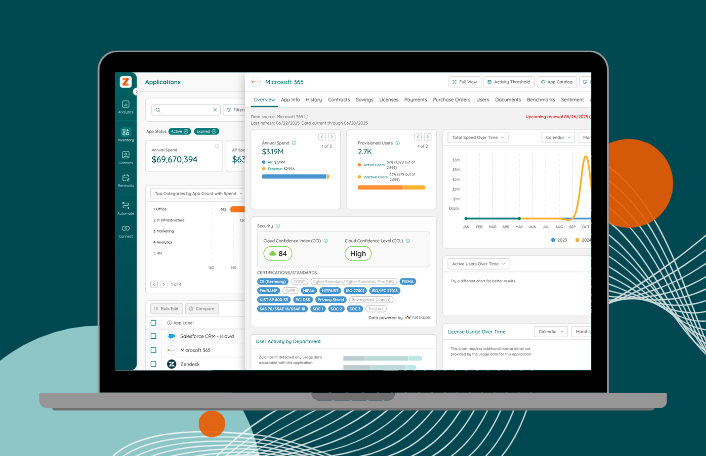
Table of Contents ToggleWhat Is a SaaS System of Record?4 Reasons...

Table of Contents ToggleWhat Is a SaaS System of Record?4 Reasons...
| Cookie | Duration | Description |
|---|---|---|
| cookielawinfo-checkbox-analytics | 11 months | This cookie is set by GDPR Cookie Consent plugin. The cookie is used to store the user consent for the cookies in the category "Analytics". |
| cookielawinfo-checkbox-functional | 11 months | The cookie is set by GDPR cookie consent to record the user consent for the cookies in the category "Functional". |
| cookielawinfo-checkbox-necessary | 11 months | This cookie is set by GDPR Cookie Consent plugin. The cookies is used to store the user consent for the cookies in the category "Necessary". |
| cookielawinfo-checkbox-others | 11 months | This cookie is set by GDPR Cookie Consent plugin. The cookie is used to store the user consent for the cookies in the category "Other. |
| cookielawinfo-checkbox-performance | 11 months | This cookie is set by GDPR Cookie Consent plugin. The cookie is used to store the user consent for the cookies in the category "Performance". |
| viewed_cookie_policy | 11 months | The cookie is set by the GDPR Cookie Consent plugin and is used to store whether or not user has consented to the use of cookies. It does not store any personal data. |
